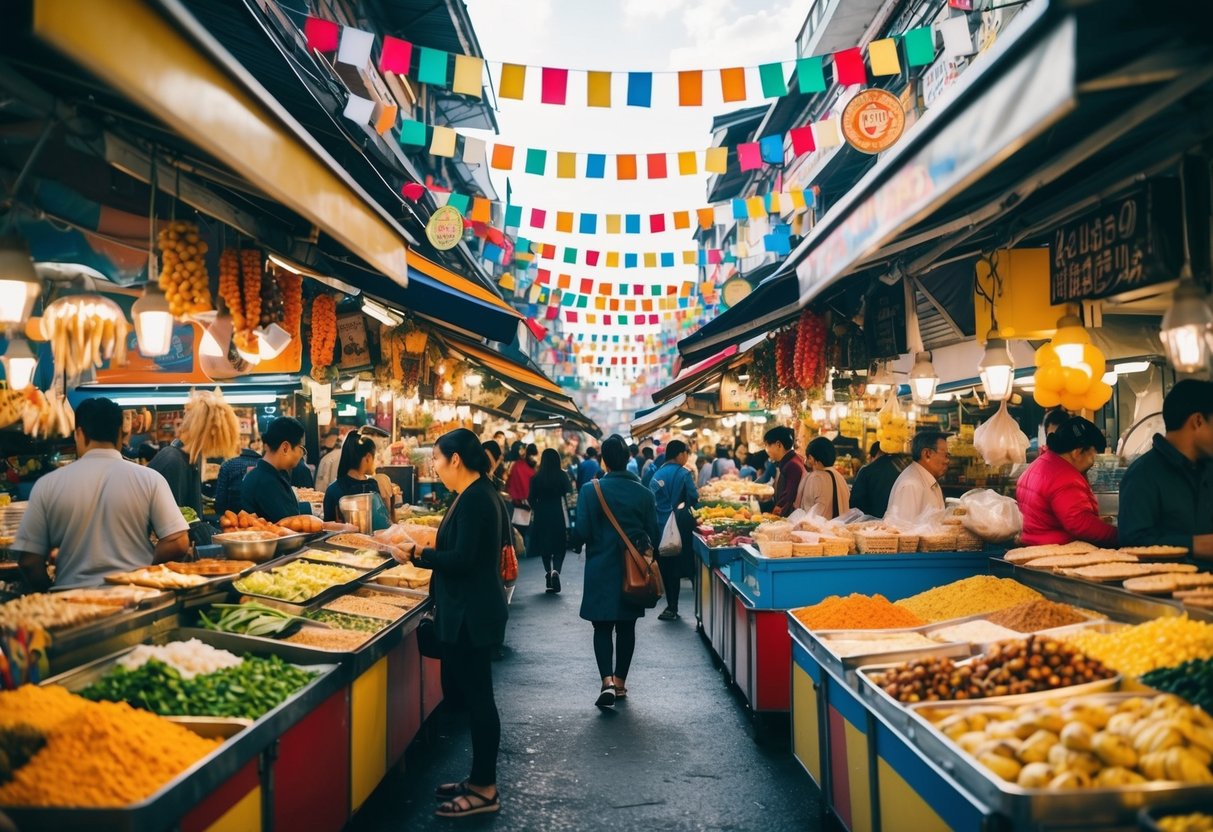Navigating Global Street Food Scenes: Top Tips for Safe Tasting Adventures
Cultural Etiquette and Tips
Cultural norms can vary significantly between regions, so understanding them is crucial. It’s important to be mindful of body language, as gestures that are normal in one culture may be offensive in another. For instance, pointing is considered rude in some countries. Paying attention to these differences ensures respect and smoother interactions with vendors.
Showing appreciation for the food by finishing what’s served is often seen as polite. In certain markets, it’s customary to haggle over prices, while others have fixed prices. Observing local practices can help determine the appropriate approach. Taking a moment to thank the vendor after the transaction can foster goodwill and a sense of shared respect. Each small gesture contributes to a memorable market experience.
The Best Times to Explore Street Food Scenes

Exploring street food is about capturing the essence of a location through its flavors and experiences. Not all times of year offer the same opportunities, as street food availability and vibrancy can vary with seasons and local events or festivals.
Seasonal Variations in Street Food Availability
Seasonality significantly influences street food scenes across the globe. In many regions, street food stalls are more active during warmer months, as the weather encourages outdoor activities. Conversely, in some colder climates, you might find more stalls offering hearty and warming foods during winter festivals.
In tropical regions, the wet season might limit outdoor cooking, shifting the focus to covered markets. Whereas, during dry months, streets come alive with a wide variety of fresh, seasonal ingredients. Being aware of these seasonal differences can enhance the culinary experience while on the street food trail. This also provides an opportunity to sample unique dishes prepared with peak-season produce.
Local Festivals and Street Food
Local festivals can transform street food scenes into bustling hubs of culinary diversity. Festivals often feature temporary stalls that showcase regional specialties, offering flavors not usually available the rest of the year. These events draw locals and tourists alike, creating a vibrant atmosphere filled with music, color, and enticing aromas.
Timing a visit to coincide with such festivals can provide a unique glimpse into local culture. Festivals like Thailand’s Songkran or India’s Holi often include special fare that reflects traditions. In Japan, summer matsuri offer a chance to see how street food blends with cultural heritage. Thus, aligning travel plans with local festivities can significantly enrich the adventure of street food exploration.
Techniques for Authentic Street Food Experiences
To truly embrace global street food, one must engage with local traditions and explore curated culinary tours. These strategies enhance the authenticity of the culinary journey, presenting a more genuine taste of regional flavors.
Learning from the Locals
Understanding street food requires insight into local customs. Locals know the best stalls, hidden gems, and peak times to enjoy fresh meals. Engaging with the community enhances the experience, offering a deeper connection with the culture.
Talking with vendors and fellow food enthusiasts can reveal the history and preparation methods behind certain dishes. This interaction not only boosts appreciation but may also uncover special ingredients and techniques unique to the area.
Sometimes, locals offer tasting tips or alert visitors to dishes off the typical tourist path. These insider tips often lead to delightful discoveries, enriching the culinary adventure. Observing where locals gather often indicates a spot worth trying, ensuring a more authentic taste.
Taking Culinary Tours
Culinary tours present an organized approach to exploring street food. These tours often include guides with in-depth knowledge of local cuisine, leading participants to renowned spots. Such guidance ensures exposure to a wide range of dishes, from iconic staples to lesser-known specialties.
Tours are designed to focus on hygiene and safety, selecting vendors with trusted reputations. Participants benefit from expert narratives about the dishes, enhancing their tasting experience with rich contextual backgrounds. Often, these excursions include interactions with chefs or vendors, providing exclusive insights into culinary practices.
Joining a tour can also foster connections with like-minded travelers, offering a shared appreciation for the world’s diverse food cultures. These experiences, steeped in local flavor, provide memorable and authentic encounters with street food.



